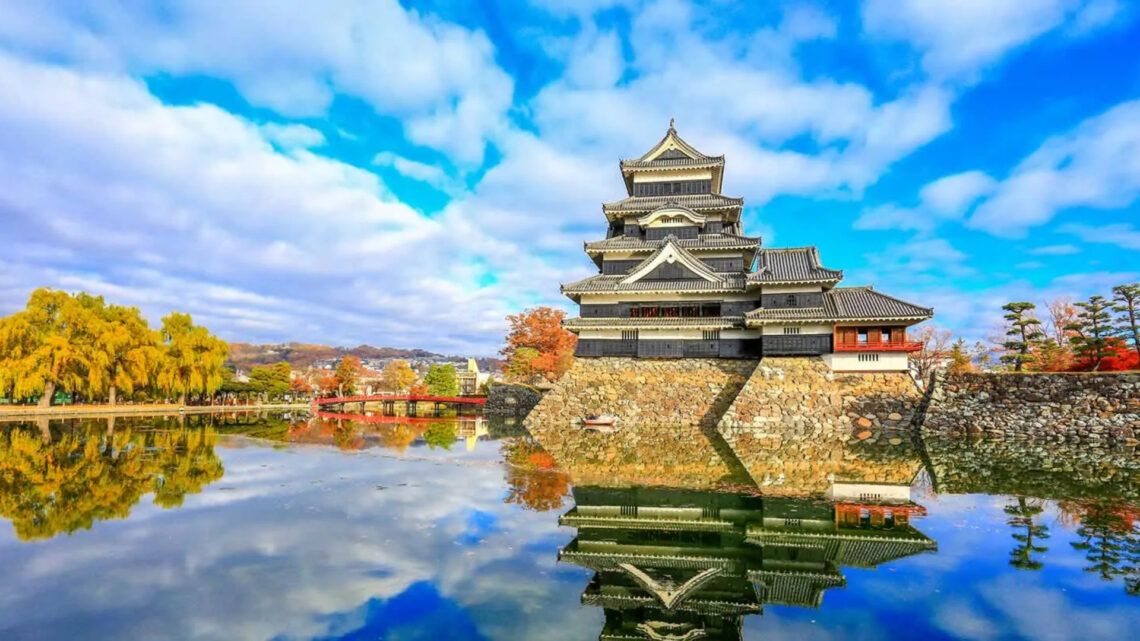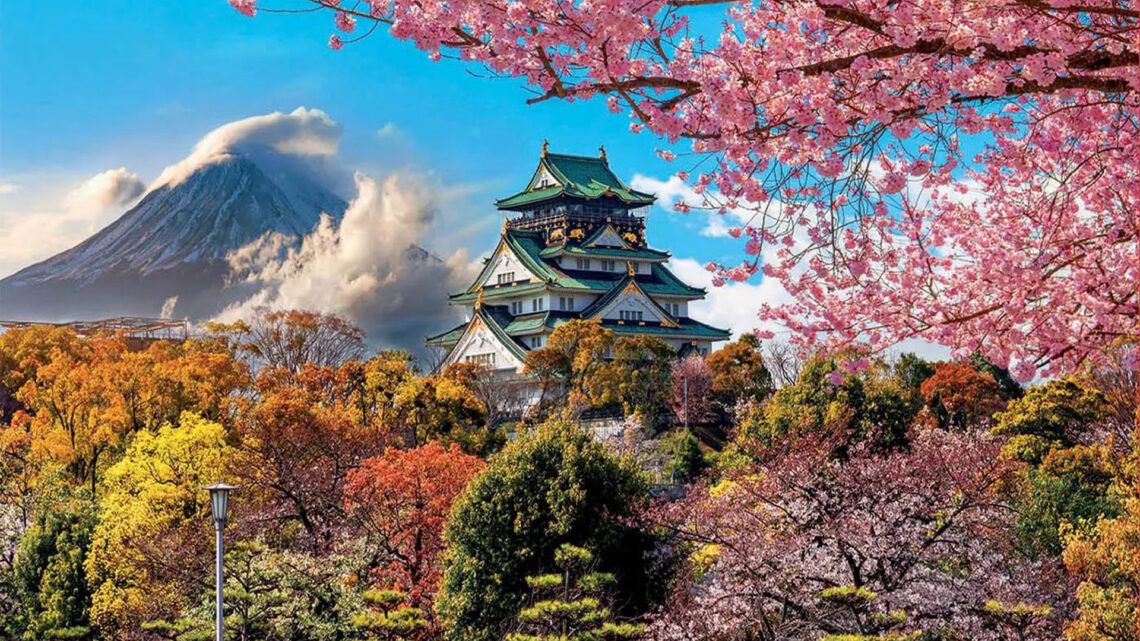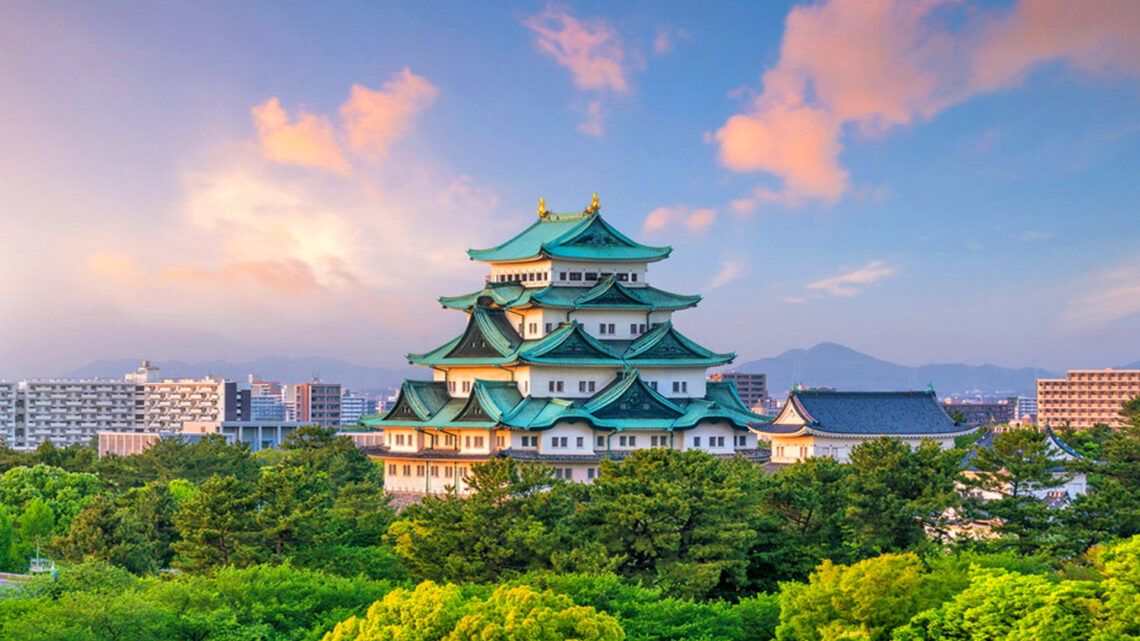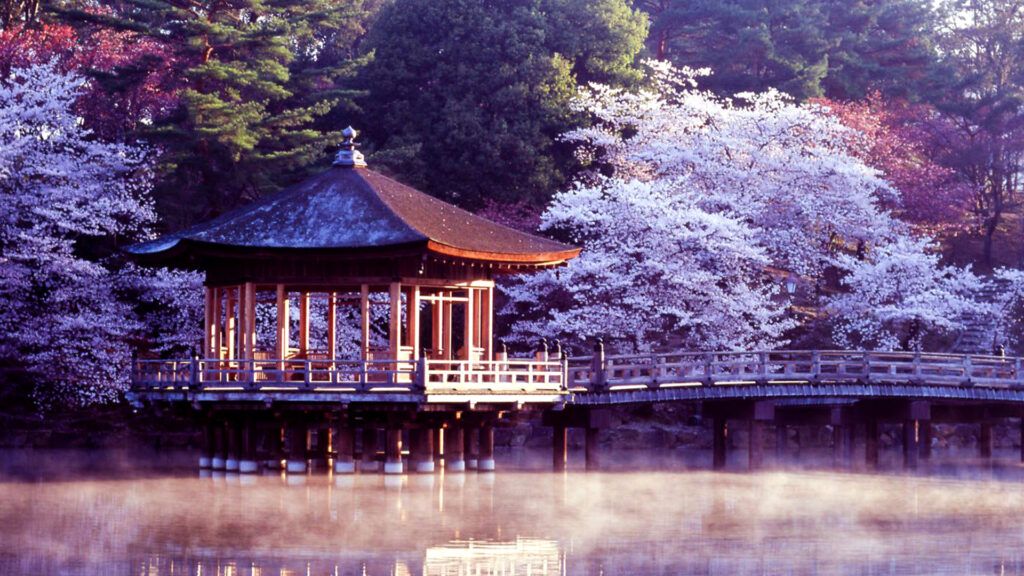
Nara, one of Japan’s oldest and most historically significant cities, offers a fascinating journey into the country’s past. Located in the Kansai region, Nara was the first permanent capital of Japan from 710 to 794, making it a central heart of Japanese history and culture. This period is also known as the Nara era and marks a golden age in the development of art, religion, and politics in Japan. The following article takes you on an in-depth exploration of Nara, its historical significance, cultural treasures, and modern attractions.
The Nara era is one of the most significant epochs in Japanese history. During this period, Nara established itself as Japan’s political and cultural center. The city was designed after the Chinese Tang capital Chang’an and is characterized by a strict grid pattern, considered advanced and modern at the time. This period was marked by the consolidation of Buddhism as the state religion and the development of a centralized government.
In 710, Nara was officially declared the capital of Japan. This marked the beginning of a new era in which the city became the center of politics, culture, and religion. The decision to make Nara the capital was of great strategic and symbolic importance. It was a step towards centralizing power and creating a unified state.
Nara is home to some of Japan’s oldest and most significant temples and shrines. These sacred sites are not only religious centers but also architectural masterpieces and treasure troves of art history.
Nara and his historical places
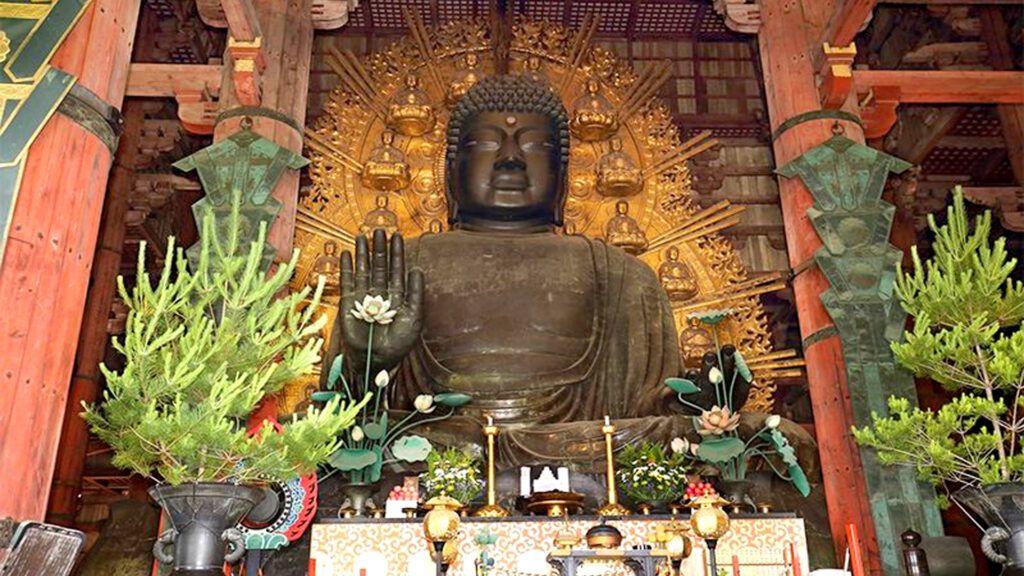
The Todai-ji Temple in Nara is not only one of Japan’s most impressive buildings but also a symbolic monument of Buddhist culture and history. It was built during the 8th century Nara era and remains one of Japan’s most well-known and frequently visited attractions. The temple complex houses the world’s largest bronze Buddha statue, the Daibutsu, and is an impressive example of the high craftsmanship and religious fervor of that time.
Construction of the Todai-ji Temple began in 728 AD under Emperor Shomu’s reign. The emperor decided to build this monumental temple as part of his efforts to consolidate Buddhism as the state religion and unify the country. The decision to build such a large temple was also influenced by the political and social challenges of the time, including natural disasters and epidemics that plagued the land. The temple was meant to serve as a symbolic center of hope and faith and simultaneously invoke Buddha’s protection and blessings upon the land.
The heart of Todai-ji Temple is the Daibutsuden, or Great Buddha Hall. This impressive building is the largest wooden structure in the world and houses the Daibutsu, a giant bronze Buddha statue. The original hall was completed in 752 AD but was damaged and rebuilt multiple times over the centuries due to fires and earthquakes. The current structure dates back to 1709 and is about two-thirds of the original size.
The hall is 57 meters long, 50 meters wide, and 49 meters high. Despite its enormous size, the original Daibutsuden was even larger, reflecting the immense ambitions and capabilities of the builders of that era. Upon entering the hall, one is immediately overwhelmed by the sheer size and majesty of the Buddha statue, which is about 15 meters tall and weighs around 500 tons.
The Daibutsu statue, also known as Vairocana Buddha, is the heart of the temple. This colossal sculpture was made from approximately 437 tons of bronze and over 130 kilograms of gold. Construction of the statue began in 743 AD and was completed in 749 AD. The statue represents the cosmic Buddha Vairocana, who embodies the universal Buddha principle and symbolically represents enlightenment and the all-encompassing wisdom of Buddha.
Creating the statue was an unprecedented technical and logistical challenge. The vast amount of required material and the precision of the casting techniques made constructing the statue one of the greatest artisanal projects of the time. The statue’s head was recast in the 17th century after an earthquake, demonstrating the statue’s maintenance and preservation over the centuries.
In addition to the Great Buddha Hall, the Todai-ji Temple complex includes many other significant buildings and structures, each with its own historical and cultural significance.
The Nigatsu-do Hall, also known as the Hall of the Second Month, is famous for the Omizutori Festival, held annually in March. This ceremony is one of Japan’s oldest Buddhist rituals and symbolizes the purification and renewal of the spirit. The hall itself offers a beautiful view of Nara and is a place of quiet meditation and prayer.
The Hokke-do Hall, also known as Sangatsu-do, is one of the oldest surviving structures of Todai-ji Temple. It was originally used as a storehouse for sacred texts and relics. The hall houses a number of significant Buddhist sculptures, including a statue of Kannon, the goddess of compassion.
The Shoro Bell Tower of Todai-ji Temple is another impressive structure. The tower contains one of Japan’s largest bronze bells, cast during the Heian period (794-1185). The bell has a deep, resonant sound that can be heard throughout the temple grounds, enhancing the spiritual atmosphere.
Todai-ji Temple is surrounded by beautiful gardens and green spaces, creating a serene and peaceful environment. The temple garden is an example of traditional Japanese garden art, emphasizing the natural beauty of the landscape while also providing a place for contemplation and meditation.
Near the Great Buddha Hall is the Kagami-ike Pond, also known as Mirror Pond. The pond reflects the majestic structures of the temple and creates a picturesque setting that is particularly stunning at sunset. The pond is a popular spot for photographers and an ideal place to enjoy the temple’s tranquil beauty.
In 1998, Todai-ji Temple, along with other historical monuments in Nara, was recognized as a UNESCO World Heritage Site. This recognition underscores the temple’s immense cultural and historical significance. Todai-ji Temple is not only a spiritual center but also a living museum that offers visitors deep insights into Japanese Buddhist art, architecture, and history.
Todai-ji Temple is undoubtedly one of Japan’s most significant and impressive landmarks. Its historical importance, architectural grandeur, and spiritual atmosphere make it an essential destination for anyone looking to experience Japan’s rich cultural history. A visit to Todai-ji Temple is a journey into the past that reveals the timeless beauty and profound spiritual significance of this outstanding monument.
Kasuga-Taisha Shrine, founded in 768, is another important religious center in Nara. This Shinto shrine is famous for its hundreds of bronze and stone lanterns that line the path to the shrine. Kasuga-Taisha is a symbol of the deep connection between Shintoism and Japanese culture.
Kofuku-ji Temple, originally founded in 669, is another significant Buddhist temple in Nara. The temple complex includes several impressive pagodas and halls, including the famous Five-Story Pagoda, which is one of Nara’s landmarks.
gardens & deers in Nara

Nara is not only known for its temples and shrines but also for its beautiful gardens and parks, which offer insights into traditional Japanese garden art.
Nara Park is a sprawling public park in the heart of the city and home to over 1,200 free-roaming sika deer, which are considered sacred and revered as messengers of the gods. The park covers an area of about 660 hectares and includes several of Nara’s most important sights, including Todai-ji Temple and Kasuga-Taisha Shrine.
In the heart of Nara Park lies the aforementioned Todai-ji Temple, a sprawling public park known for its free-roaming sika deer. These deer are considered sacred animals and messengers of the gods, integral to the temple’s atmosphere. Visitors can feed and photograph the deer, adding an extra dimension to the temple visit.
Isuien Garden is an outstanding example of traditional Japanese garden art. The garden is divided into two parts, each from different historical periods. The front garden was created in the 17th century, while the rear garden was designed in the 19th century. Isuien is famous for its harmonious integration of nature and architecture.
Hiking and Outdoor Activities around Nara

The surroundings of Nara offer a variety of opportunities for hiking and outdoor activities. The hilly landscapes, dense forests, and historical sites make Nara an ideal destination for nature lovers and adventurers. Here are some of the most notable places and activities you can enjoy in and around Nara.
Mount Wakakusa, also known as Wakakusayama, is a small mountain on the eastern edge of Nara Park. The climb to the summit takes about 30 to 45 minutes and offers a splendid view of Nara city and the surrounding landscape. The mountain is especially known for the annual Wakakusa Yamayaki Festival, where the dry grass on the mountain is set on fire, creating a spectacular display. The hike is relatively easy and suitable for hikers of all ages.
Kasugayama Forest, a UNESCO World Heritage site, extends behind the Kasuga Taisha Shrine and is a sacred forest that has remained untouched for centuries. The forest is a significant nature reserve, home to many rare plant and animal species. Hiking trails through the forest allow visitors to experience the natural beauty and spiritual atmosphere of this place. The paths are well-marked and offer various routes, from short walks to longer hikes.
Mount Yoshino, about an hour from Nara, is famous for its spectacular cherry blossoms in spring. Over 30,000 cherry trees cover the mountain slopes, attracting visitors from around the world. Mount Yoshino offers numerous hiking trails that lead through dense forests, past temples and shrines, and to viewpoints where you can enjoy breathtaking scenery. The trails vary in difficulty, accommodating both beginners and experienced hikers.
Mitarai Gorge is a hidden gem in the mountains south of Nara. The gorge is known for its clear waterfalls, deep pools, and spectacular rock formations. A well-marked hiking trail runs along the gorge, providing stunning views of the rushing water and surrounding nature. The hike through Mitarai Gorge takes about two to three hours and is a wonderful way to experience the region’s unspoiled nature.
Nara and the surrounding region offer excellent opportunities for cycling tours. Numerous well-developed bike paths and quiet country roads lead through picturesque villages, rice fields, and forests. A popular route is the trail from Nara to Asuka, a historic town considered the birthplace of Japanese civilization. The approximately 25-kilometer route runs through idyllic landscapes and past historical sites such as the Ishibutai Kofun, an ancient burial mound.
The diverse landscape around Nara is a paradise for birdwatchers. Especially in the Kasugayama Forest and the Mount Yoshino area, there are numerous opportunities to observe rare and native bird species. Guided birdwatching tours are available, offering both beginners and experienced birdwatchers the chance to discover the region’s rich birdlife.
The parks and forests around Nara provide numerous beautiful spots for camping and picnicking. Nara Park itself has many idyllic places where you can spread a blanket and enjoy the peaceful surroundings. For those who wish to spend a night outdoors, there are several campsites in the region that offer basic facilities and often breathtaking views.
In the rivers and lakes around Nara, there are opportunities for kayaking and canoeing. The Yoshino River, which flows through the region of the same name, offers calm sections ideal for relaxed paddling tours. These activities are particularly popular in the warmer months and provide a refreshing way to experience the region’s natural beauty from the water.
The best time for hiking and outdoor activities in Nara is during spring and autumn. In spring, the cherry trees bloom, and the landscape comes to life, while autumn offers an equally stunning backdrop with its vibrant fall colors. Both seasons provide pleasant temperatures and clear days perfect for outdoor activities.
After a hike or bike ride, the traditional teahouses in and around Nara offer a welcome refreshment. These teahouses serve delicious green tea and traditional Japanese sweets that rejuvenate the body and mind. Some teahouses also offer a wonderful view of the surrounding nature, making them a perfect place for a break.
For those who want to learn more about the history and nature of the region, guided hikes and tours are an excellent choice. Local guides can provide valuable insights and background information that make the visit even more enriching. They also know the best routes and hidden gems you might not discover on your own.
The surroundings of Nara offer an impressive variety of hikes and outdoor activities for every taste and fitness level. Whether you enjoy the majestic views from Mount Wakakusa, walk through the sacred forests of Kasugayama, or experience the spectacular cherry blossoms at Mount Yoshino, Nara is a paradise for nature lovers and adventurers. The well-preserved nature and rich history of the region make every outdoor activity an unforgettable experience. A visit to Nara is not only a journey into the past but also an opportunity to fully enjoy the timeless beauty of the Japanese landscape.
Culinary Delights of Nara

Nara offers a rich variety of culinary experiences deeply rooted in its local history and culture. The cuisine of Nara utilizes regional ingredients and traditional preparation methods that have often been passed down through generations. Here are some of the most notable culinary specialties of the region that you should definitely try during your visit to Nara.
Kakinoha-zushi is a unique type of sushi where the rice and fish are wrapped in a leaf from the persimmon tree (kakinoha). This method was originally developed to preserve sushi for longer periods, especially during the hot summer months. The fish, typically mackerel or salmon, is lightly salted and placed on a slice of rice. The entire piece is then wrapped in a persimmon leaf, which imparts a slightly tangy flavor and distinctive aroma to the sushi. The leaves also help keep the sushi moist and protect it from drying out. Kakinoha-zushi is often served on special occasions and is a staple of the local cuisine.
Miwa Somen are extremely thin wheat noodles originating from the Miwa region in Nara. These noodles are known for their delicate texture and subtle flavor. The production of Miwa Somen requires considerable skill and patience. The dough is stretched and twisted multiple times until the desired thinness is achieved. Traditionally, the noodles are served cold in the summer, often with a light dipping sauce made from soy sauce and dashi. This refreshing dish is particularly popular on hot days.
Yamato Cha, also known as Yamato tea, is a type of tea grown in the Yamato region of Nara. The tea is made from hand-picked leaves and is known for its mild yet rich flavor. Yamato Cha is commonly served as green tea and plays an important role in the Japanese tea ceremony. The tea leaves are carefully steamed, rolled, and dried to preserve their unique taste. This tea is often paired with traditional Japanese sweets, providing a soothing and aromatic experience.
Narazuke is a special type of pickled vegetable traditionally made in Nara. This delicacy is created by pickling vegetables such as cucumbers, melons, or ginger in sake lees (the residues left after sake production). The pickling process can take several years, giving the vegetables a deep, complex flavor and a slightly crunchy texture. Narazuke is often served as a side dish with rice or as a snack with sake.
Asuka-nabe is a traditional stew that dates back to the Asuka period (538-710), which predates the Nara period. This stew is made from a variety of ingredients, including chicken, tofu, vegetables, and mushrooms, all cooked in a broth of chicken or fish stock. What makes Asuka-nabe special is the addition of milk sauce, which gives the broth a creamy consistency and a mild, rich flavor. This stew is often enjoyed during the cold winter months and is a great example of the hearty, warming dishes of the region.
Mochi is a popular Japanese rice cake dessert with a long tradition in Nara. It is made from sticky rice flour (mochiko) that is kneaded into a soft, chewy mass. Mochi can be prepared and served in various ways, such as filled with sweet red bean paste (anko) or sprinkled with kinako (roasted soybean flour). In Nara, mochi is especially popular during the New Year’s celebration, where it symbolizes luck and prosperity.
Kuzu-mochi is a special type of mochi made from kuzuko, a root starch. This dessert has a smooth, jelly-like texture and is often served with kuromitsu (black sugar syrup) and kinako. Kuzu-mochi is a light and refreshing dessert, particularly popular on hot days. The use of kuzuko gives the mochi a unique texture and a subtle, pleasant flavor.
Nara also has a long tradition of producing sake, the traditional Japanese rice wine. The region is known for its high-quality sake made from locally grown rice and pure spring water. Some of Japan’s oldest and most renowned sake breweries are located in Nara. Sake from Nara is characterized by its rich, full-bodied flavor and delicate aroma. Visitors can tour many local breweries and participate in tastings to learn more about the intricate brewing process.
Yuzu-sake is a special type of sake flavored with yuzu, a Japanese citrus fruit. This sake has a refreshing, slightly tangy taste and is particularly popular as an aperitif or digestif. The combination of the mild sake flavor and the intense yuzu aroma makes this drink a special treat.
The culinary specialties of Nara offer a deep insight into the region’s rich culture and history. From traditional dishes like Kakinoha-zushi and Miwa Somen to unique treats like Narazuke and Kuzu-mochi, Nara’s cuisine is diverse and full of flavors. These culinary experiences are an essential part of a visit to Nara and help to understand the deep connection between the history, culture, and cuisine of this remarkable city. A gastronomic adventure in Nara is not just a journey of taste but also a journey through time, revealing the deeply rooted traditions and innovative creations of this ancient Japanese capital.
Traveling to Nara and Accommodations in Nara

Nara is located approximately 400 kilometers southwest of Tokyo and is easily accessible by train, plane, or car.
By Train: The most convenient way to travel from Tokyo to Nara is by Shinkansen (bullet train). From Tokyo Station, take the Tokaido Shinkansen to either Kyoto or Shin-Osaka. From there, transfer to a local train that will take you directly to Nara. The total journey time is about 3 to 4 hours. Another option is the direct Kintetsu Limited Express train from Kyoto to Nara, which takes approximately 45 minutes.
By Plane: The nearest airport to Nara is Kansai International Airport (KIX) in Osaka. From there, you can take a train or bus to Nara. The train journey takes about 1.5 hours, while the bus ride takes around 1 hour.
By Car: If you choose to rent a car, you can drive from Tokyo to Nara via the expressway. The drive takes about 5 to 6 hours, depending on traffic conditions.
Osaka is much closer to Nara and is a popular departure city for day trips to Nara.
By Train: From Osaka, there are two main stations you can use to reach Nara: Osaka Station and Namba Station. The JR Yamatoji Rapid Service runs directly from Osaka Station to Nara and takes about 45 minutes. From Namba Station, you can take the Kintetsu Limited Express or Kintetsu Rapid Express, both of which take around 30 to 40 minutes.
By Bus: There are also buses that operate between Osaka and Nara. However, these are slower than the trains and take about 1 hour.
Kyoto is also a popular starting point for a trip to Nara, as it is only about 35 kilometers away.
By Train: The JR Nara Line connects Kyoto directly with Nara, and the journey takes approximately 45 minutes. Alternatively, you can take the Kintetsu Limited Express, which takes about 35 minutes and departs from Kintetsu Kyoto Station.
By Car: The drive from Kyoto to Nara takes about 1 hour, depending on traffic conditions.
Accommodations in Nara
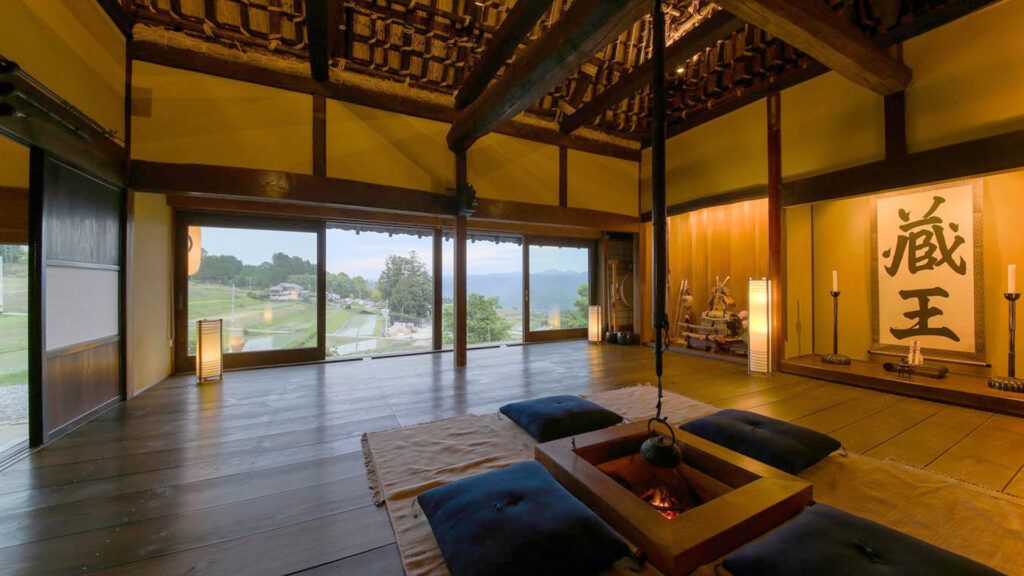
Nara offers a variety of accommodation options, ranging from luxurious hotels and traditional ryokans to budget-friendly guesthouses and hostels. Here are some of the best choices for different types of travelers.
Nara Hotel is a historic luxury hotel that opened in 1909 and is considered one of the most prestigious hotels in Japan. Located near Nara Park, it offers a perfect blend of traditional Japanese style and modern comfort. The rooms are elegantly furnished, and many provide beautiful views of the surrounding gardens and historical sites. The hotel features several restaurants serving both Japanese and international cuisine, as well as a tea lounge that celebrates traditional Japanese tea culture.
JW Marriott Hotel Nara is a modern luxury hotel that recently opened. It offers top-notch amenities, including a spa, fitness center, and several upscale restaurants. The rooms are stylish and comfortable, with modern amenities and panoramic views of the city. The hotel is conveniently located just a short drive from Nara Park and major attractions.
Kankaso Ryokan is a traditional Japanese inn located in the heart of Nara Park. It provides an authentic Japanese experience with tatami mats, futon beds, and traditional Japanese baths. The rooms offer views of the beautifully maintained Japanese gardens of the ryokan. Meals are served in the Kaiseki style, a multi-course dinner prepared with fresh, seasonal ingredients.
Asukasou is another traditional ryokan near Nara Park. It offers comfortable Japanese-style rooms, some with private open-air baths. The ryokan features a communal onsen (hot spring bath) and also serves Kaiseki meals. The friendly service and tranquil atmosphere make Asukasou an excellent choice for a relaxing stay in Nara.
Hotel Nikko Nara is located directly next to JR Nara Station and offers comfortable, well-equipped rooms at reasonable prices. The hotel has several restaurants, a fitness center, and a spa. Its central location makes it an ideal base for exploring the city and surrounding attractions.
Daiwa Roynet Hotel Nara provides modern rooms with all necessary comforts, including free Wi-Fi and flat-screen TVs. The hotel is close to JR Nara Station, making it a convenient starting point for day trips to Nara’s historical sites and other attractions.
Nara Guesthouse 3F is a cozy and affordable accommodation in the heart of Nara. It offers both dormitory-style and private rooms, along with a shared kitchen and lounge area. The guesthouse is popular among young travelers and backpackers seeking a friendly and relaxed atmosphere.
Guesthouse Nara Backpackers is housed in a renovated traditional Japanese home and offers both dormitory-style and private rooms. Located near Nara Park, it provides an authentic Japanese experience at an affordable price. There is a communal kitchen and living room where guests can meet and interact.
The best times to visit Nara are in the spring (March to May) and autumn (September to November) when the weather is pleasant and the landscape is either in full bloom or showcasing vibrant autumn colors. April, in particular, is a popular time to visit Nara due to the cherry blossoms.
Nara has a well-developed public transportation network, including buses and trains that connect major attractions and districts. The Nara Kotsu Bus Service is especially useful for tourists, as it covers all key temples and shrines. There are also day passes available for unlimited rides, which are ideal for extensive explorations.
A popular way to explore Nara is by bicycle. There are several bike rental stations near the train stations and in the city center. Bicycling allows you to comfortably ride through Nara Park and visit sights at your own pace.
Nara is a wonderful destination rich in history, culture, and natural beauty. The city offers a range of accommodation options for every budget and taste, from luxury hotels and traditional ryokans to cozy guesthouses and hostels. Its easy accessibility from Tokyo, Osaka, and Kyoto makes Nara an ideal spot for a day trip or a longer stay. Whether you want to explore the famous temples and shrines, stroll through Nara Park, or simply enjoy the peaceful atmosphere, Nara has something for everyone.
my Conclusion

Nara once took me on a journey that delved deep into the roots of Japanese culture and history. This city, once the heart of ancient Japan, still radiates a special magic that captivates every visitor. From the majestic temples and shrines to the serene gardens and gentle hills—Nara is a place that touches the soul and inspires the spirit.
The encounters with the friendly locals, the unforgettable walks through Nara Park amidst the tame deer, and the quiet moments of reverence in the sacred halls of Todai-ji Temple have deepened my understanding and appreciation for Japan’s rich traditions. Every hike through the surrounding nature, every delicious dish I tasted, and every story shared with me brought this place to life.
My sadly too-short time in Nara showed me that there are places that offer more than just sights—they offer experiences that one carries in their heart. Nara is such a place. It is a destination that must not only be visited but truly experienced. If you are looking for a place where history, culture, and nature come together in perfect harmony, Nara will capture your heart as well.
I hope that my contribution has provided you not only with valuable information and tips for your trip to Nara but also with a sense of how profound and fulfilling a visit there can be. Allow yourself to be enchanted by Japan’s ancient capital, immerse yourself in its rich history, and enjoy the peaceful beauty of this unique place. Nara awaits to inspire and delight you as well.

